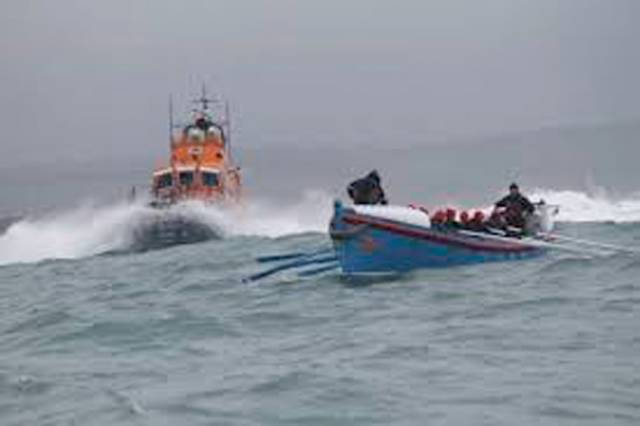#RNLI - For more than 100 years, the crews of Courtmacsherry Harbour Lifeboat Station have laid a wreath over the site of RMS Lusitania.
In Courtmacsherry Bay, the old British Royal Navy watch tower of the Seven Heads peninsula is the closest point of land to the Lusitania tragedy at 11.2 nautical miles.
Courtmacsherry Harbour is also home to a one of the earliest established lifeboat stations in Ireland, founded in 1825, and at the time of the Lusitania tragedy located at Barry’s Point in Courtmacsherry.
On 7 May 1915, the Lusitania, a British Cunard line ocean liner, was on passage from New York when she was torpedoed and sunk by a German U-boat south of Courtmacsherry Bay, with the loss of 1,201 lives.
The Courtmacsherry RNLI volunteer lifeboat crew was alerted to the tragedy and due to the fine weather that day, the sails were of no use, so they rowed the Kezia Gwilt lifeboat to the scene of the sinking.
The sea was strewn with the dead, some with lifebelts on, others holding on to pieces of rafts. The volunteers of the Kezia Gwilt spent six hours on scene, taking bodies from the water.
In 2015, the present lifeboat crew and residents of Courtmacsherry village, many of whom are related to the original 1915 lifeboat crew who were called to service, staged a re-enactment of that heroic row by the then lifeboat crew to the site of the Lusitania.
Since that ill-fated day in 1915, the crew of Courtmacsherry RNLI annually pay tribute to those lost by laying a wreath over the wreck of RMS Lusitania.
If anyone would like the crew to lay a wreath on their behalf for those lost on the Lusitania, they can bring it to Courtmacsherry Harbour Lifeboat Station before 12.30pm on Monday 7 May.































































